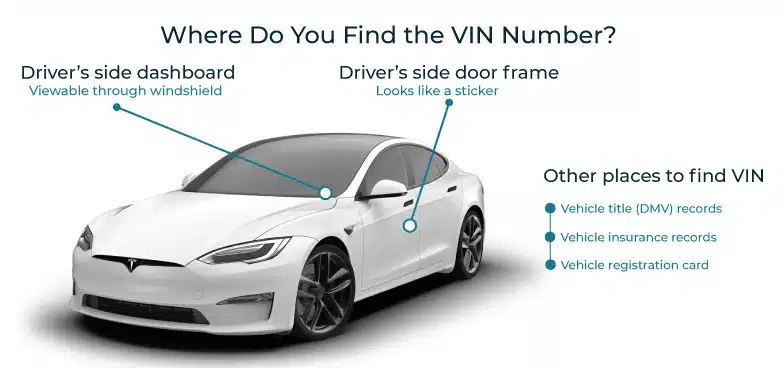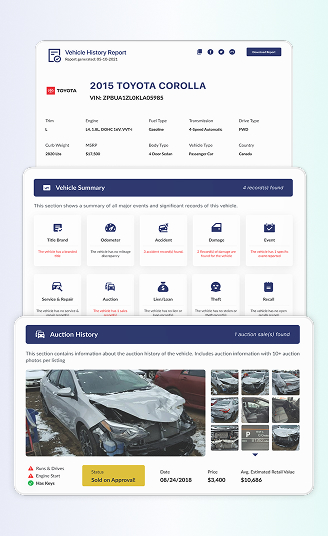
Oldsmobile Recall Check
Check your Oldsmobile Recall Check, powered by Detailed Vehicle History, Instant VIN search to uncover safety defects, risks, and available remedies. Simply enter your VIN to see repair details, claim free fixes, and maintain your car’s safety and value.
What is an Oldsmobile Recall?
Oldsmobile built roomy cruisers and confident sedans that still tug at the heart, but they didn’t leave the safety rulebook behind. If a defect turns up, those cars can still be recalled.
Although Oldsmobile stopped production in 2004, General Motors (GM), as the Oldsmobile parent company, remains responsible for any Oldsmobile safety recalls. When GM or the National Highway Traffic Safety Administration (NHTSA) confirms a problem that threatens safety or breaks a federal standard, a recall is opened, and the fix is free. The notice explains the defect, the risk, and the remedy.
You simply book an appointment with an authorized dealer and get the repair at no cost. It’s straightforward, important, and potentially life-saving.
Why You Should Check the Oldsmobile Recall History?
Running an Oldsmobile Recall Check is crucial for used car buyers, as it helps ensure the safety and reliability of the vehicle they are considering purchasing. If an Oldsmobile vehicle has an outstanding recall or defect, it may not perform as intended and could pose a serious risk to the driver, passengers, and other motorists on the road.
Buyers can identify any issues by running an Oldsmobile Recall Check and ensuring they are addressed before purchasing the vehicle. This can also help buyers negotiate a better price and provide peace of mind knowing that they are driving a safe and reliable vehicle.
Below are some extra reasons why you should check the recall:
Avoid Unsafe Oldsmobile
Any vehicle can develop safety problems, and Oldsmobile is no exception. A quick recall check tells you if your car has any outstanding campaigns that affect safety. If it does, schedule the no-cost fix and keep the service record. It’s a simple step that helps make sure your Oldsmobile is safe for you and your passengers.
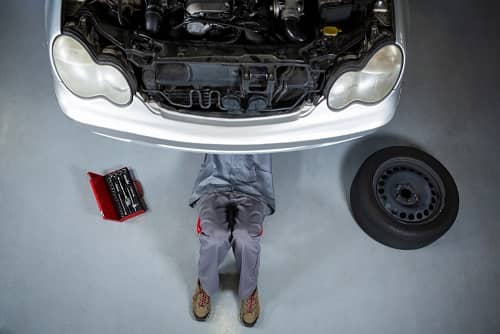

Compliance
Run a recall check before you commit. By law, automakers must alert owners to safety defects and provide free repairs. Confirming your Oldsmobile’s recall status helps you avoid paperwork problems, supports insurance and financing, and protects resale value. An Oldsmobile with open recalls may not meet federal safety standards, which can make ownership and future sale more complicated.
Avoid Out-of-Pocket Repair Bills
Run an Oldsmobile recall check before you buy or sell. Safety defects are fixed free by the manufacturer, which can save you thousands compared to paying for similar repairs yourself. Giving you peace of mind.

How to Run Oldsmobile Recalls?
Discovering your Oldsmobile recall report is just a minute away! Follow these easy steps to get the information you need quickly and effortlessly:

Find your Oldsmobile VIN
You'll need your Vehicle Identification Number (VIN) ready. Look on the driver’s side dashboard (through the windshield) or the driver’s door jamb. You can also find the VIN on your title, registration, or insurance card. Our lookup works for classic and current Oldsmobile models.


Enter your details
Type your VIN in the form above. No VIN handy? Use your license plate number instead.


Receive Your Oldsmobile Recall Report
We’ll show any open Oldsmobile recalls immediately, plus key details and next steps. If a recall is listed, book the free repair at an authorized Oldsmobile dealer for peace of mind.
What is on the Oldsmobile Recall Check?
In your Detailed Vehicle History, the Oldsmobile recall check lists any safety recalls tied to your vehicle. Each entry shows the announcement date, the affected component, and the recommended next steps.
Explore the details below for more information:
- Date of recalls: DVH lists the campaign date and mail schedule. You’ll know when the action started and when your notice should arrive.
- Affected Component: Clear label of the Oldsmobile part, from brake tube oil drips onto hot exhausts to airbags, with plain-English notes about likely symptoms.
- Consequence: Risk-at-a-glance shows what could happen on the road or during inspections. Safer decisions, fewer surprises.
- Next step for the affected Oldsmobile: Confirm if your Oldsmobile is listed under the recall and schedule repairs. With a complete Vehicle Report, you’ll also see past recalls and repair status.
An Oldsmobile vehicle history report also includes accident records, theft records, title check records, odometer readings, loan/lien information, and more. Review the records below:

Accident Records
See crash reports tied to your Oldsmobile, with dates, locations, and severity where available. It’s a quick reality check before you buy, or keep driving.
Theft Records
Find out if your Oldsmobile was reported stolen or recovered. Good to know for insurance and peace of mind.


Title Check Records
We flag salvage, rebuilt, flood, lemon, and other title brands. Title status affects insurance, value, and sometimes the practicality of a recall repair on heavily damaged cars.
Odometer Readings
We plot mileage over time for your Oldsmobile. Odd dips or jumps can hint at rollback or data errors you’ll want to sort out before money changes hands.
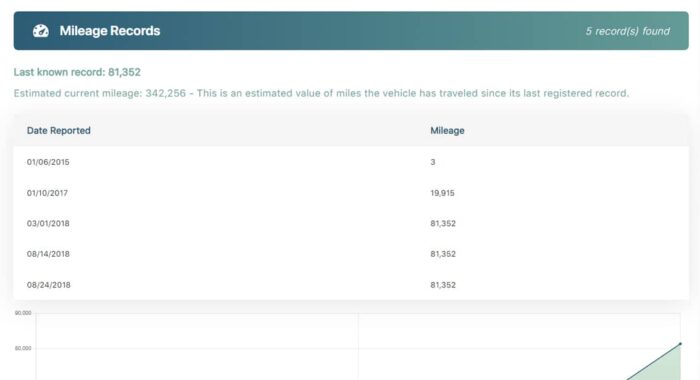
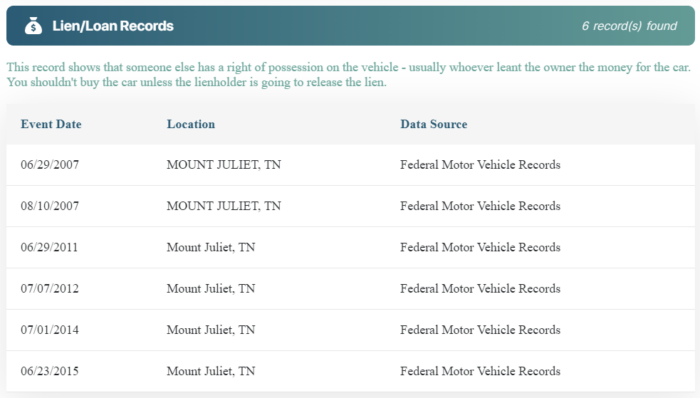
Loan & Lien Information
Avoid surprise debt. If a lien is still active on an Oldsmobile you’re buying, you’ll see it here.
Ownership Records
The number of owners, durations, and regions give a feel for how the car lived, a personal, lease, or rental car.
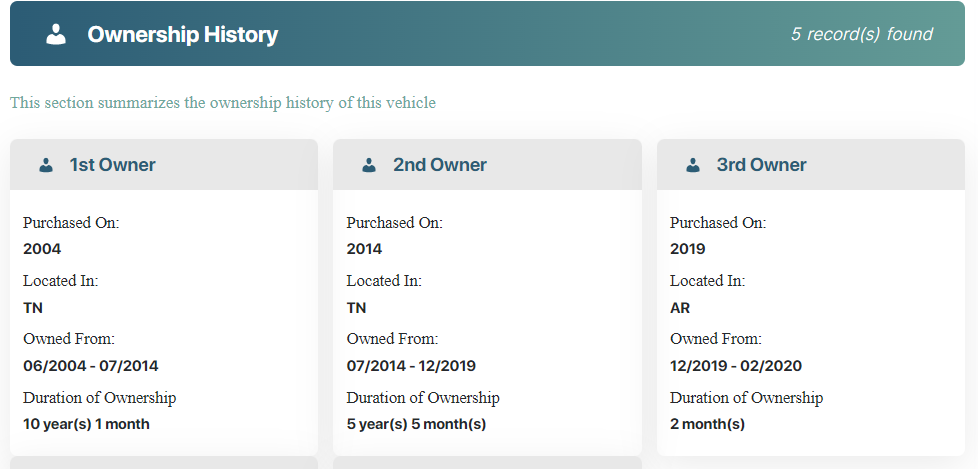
Common Issues Leading to Oldsmobile Recall
Oldsmobile vehicles have faced several recalls due to safety and reliability concerns. Common issues include engine-compartment fire risk and other notable issues.
When checking for an Oldsmobile, several factors come into play. Here’s a breakdown of elements that could affect your Oldsmobile and lead to a recall:
Fire Risk
Engine-Compartment Fire Risk
Hard braking could push oil onto the exhaust manifold, leading to an under-hood fire. NHTSA 15V701 (announced late October 2015). GM’s remedy updated prior repairs to reduce the risk; owner notifications followed. The campaign covered over a million GM vehicles on related platforms, with the Oldsmobile Intrigue included.
Loss of Crash Protection
Ignition switch stalls
A jolt or a heavy key ring could nudge the key out of RUN while you’re moving. The engine dies, the power steering and brakes get heavy, and the airbags might not deploy in a crash. GM told owners to drive with the single key only until the repair (new key rings and a key cover) was done. Alero (1999–2004) and Intrigue (1998–2002) were included in the big GM sweep on July 3, 2014. This was under the 14V400 campaign.
Seat-belt buckle strength
Under the 00V228003 campaign, some rear buckles weren’t heat-treated correctly and failed FMVSS 209 load requirements. In a crash, that could mean poor restraint. Dealers inspected the buckle date codes and replaced the suspect parts; owner mailings were planned for September 2000. (This covered multiple GM lines, Oldsmobile included.)
Driver airbag inflator weld
On the 02V222 campaign, in some vehicles, the driver’s airbag inflator could crack at a weld during deployment. Shrapnel risk aside, the bag might not inflate fully. Dealers inspected and replaced the driver airbag module if required; owner mailings were expected in September 2002. (Listed on the Bravada recalls.)
Loss of Control
Steering-wheel retaining nut
A simple but scary one: the steering-wheel retaining nut might not have been tightened properly. That can loosen the wheel on the shaft and cost you control. Under the 98V320 campaign, dealers inspected torque and tightened it; owner mailings began in December 1998. (Alero covered.)
Rear spindle-rod bolts
On cars with rear drum brakes, the rear spindle-rod bolt heads could separate, letting the wheel move out of line—hello, sudden instability. The remedy was straightforward: replace the rear spindle bolts; GM said notices would start in July 2000, under the 00V140 campaign. (Alero included.)
Doors and Latches
Power sliding door
On minivans with the passenger-side power slider, the door could look shut but sit unlatched—then pop open on hills, turns, or bumps. GM began mailing notices on April 18, 2001, and installed a new door actuator. A later update (01V264) targeted certain 1997–2001 repairs/builds where a front weld could fail and jam the actuator in the unlatched position; dealers checked actuator date codes and replaced parts as needed. This was under the 01V067campaign.
Powertrain Control/Gear Indication
Shift-indicator mismatch from a loose detent-link clip
A retaining clip on the transmission detent link could come loose, so the shifter’s PRNDL doesn’t match the actual gear. If you think you’re in Drive but it’s in Reverse, that can end badly. Dealers installed a revised manual valve/link kit with a spring-type retainer; notices began in May 1999. This was under the 99V089 campaign
Other Notable Issues
Wiper-module water intrusion
Water could enter the wiper module, corroding the circuit board/connectors and knocking out your wipers. Terrible in a downpour. Fix: patch the vent hole on the wiper module and replace the motor, board, or connector if they show corrosion. Owner notifications were expected in Q3 2004 for the GMT360 family, which includes the Oldsmobile Bravada.
Rear stop/hazard lights can go dark (multifunction switch)
An open circuit in the multifunction switch could kill the stop lamps and rear hazards (the high-mount stop lamp and turn signals still worked). Without brake lights, drivers behind you don’t get the warning they need. GM posted the issue and prepared the campaign details on the Bravada page.
Understanding the Oldsmobile Recall Process
NHTSA reviews safety complaints and, when a defect is confirmed, the automaker must issue a recall under NHTSA oversight. You can then check your Oldsmobile by VIN and get a free remedy at a dealer.
Discover the full breakdown of the Oldsmobile Recall Process below:
Report the Problem
Noticed a dangerous issue on your Oldsmobile? File a complaint with NHTSA. Your report joins a wider pattern and may kick off a formal probe.
Investigation
Once a complaint is submitted, the NHTSA follows a multi-step process to determine whether a recall is necessary.
- Screening: NHTSA’s Office of Defects Investigation reviews patterns in complaints and other data.
- Analysis: Defect petitions are reviewed in detail. If denied, the decision and reasoning are publicly posted in the Federal Register.
- Investigate the Issues: When Oldsmobile’s safety concerns are confirmed, NHTSA launches a formal investigation, ending in either no defect or a recall.
- Recall Management: NHTSA ensures owners are notified and monitors repair completion rates.
Recalls
A safety recall means the manufacturer must inform owners and correct the problem. Recalls happen when a vehicle or component is unsafe or doesn’t meet regulations. Most are voluntary, and manufacturers are required to repair, replace, refund, or buy back the affected vehicle.
How Oldsmobile Vehicle Recalls Are Handled?
When a safety problem is found on an Oldsmobile, three groups work together: the manufacturer, NHTSA, and you, the owner.
This teamwork finds defects, informs drivers, and makes sure fixes are completed to keep your vehicle safe and legal. Below is a detailed breakdown of each role
Automaker Role
Oldsmobile is a retired GM division, but that doesn’t end recall duties. By law, the manufacturer of record (GM) must investigate safety defects, file a defect report, notify owners, and provide an approved remedy. Those duties live in federal rules 49 CFR Part 573 requires timely defect reporting and owner notices, while 49 U.S.C. §30120 requires GM to provide a remedy at no charge when a safety defect or noncompliance is determined within the legal window.
In practice, GM coordinates dealers, parts, and service bulletins; it also reports progress back to NHTSA. Even if a vehicle is old, GM is still the responsible party for any active safety recall. Brand status doesn’t change that.
NHTSA’s Role
NHTSA sets the safety rules, investigates problems, and oversees recall performance. It provides the public dashboard: check for recalls, search by VIN, and report a safety problem if something feels wrong.
For owners of older vehicles, NHTSA explains a key limitation: the VIN tool covers incomplete safety recalls from the past 15 calendar years; anything older may not appear there unless the manufacturer expands coverage. NHTSA also promotes routine checks (twice a year) and emphasizes that safety recalls should be handled right away and at no cost to you.
Think of NHTSA as the independent watchdog that makes sure the process is fair, fast, and transparent.
Your Role as the Vehicle Owner
Start by running an Oldsmobile Recall Check and cross-checking the VIN on NHTSA’s site. If you see an open recall, schedule the repair quickly, especially if the notice says “Do Not Drive” or “Park Outside.”
The fix is free when the defect is discovered within the statutory window (generally 10 years from first retail sale); some campaigns extend coverage beyond that, but those are campaign-specific decisions by the manufacturer, not a universal rule.
Keep your address current with GM so notices reach you, save your repair receipts, and if you paid for the same repair before the recall, ask about reimbursement under the recall’s terms. Simple steps, big safety payoff.
Get Oldsmobile Window Sticker by VIN
Listing an Oldsmobile? Share the window sticker to answer questions before they appear. It shows original options, safety gear, and MSRP, so buyers can verify trim, packages, and spec sheets without a long back-and-forth.
Fewer doubts, faster decisions, better offers. Pair it with a history report and recall status to present a clear, honest story that feels right.

Why Use Detailed Vehicle History to Check Oldsmobile Recall?
Recalls tell you what must be fixed. Our report tells you everything around it, service notes, prior damage, odometer logic, title brands, lien flags, accident records, and even auction photos (if any).
That context turns a conversation with the seller into calm, clear bargaining. Know what’s urgent, what’s routine, and what’s a deal breaker. Walk away or drive away, sure of your choice.
Recall Check For Others Manufacturers
FAQ about Oldsmobile Recalls Check
Are Oldsmobile recall repairs really free?
Yes. Federal law requires a free remedy only if the recall was filed within 15 years of the vehicle’s first retail sale. Older vehicles may still be repaired for free as a goodwill policy, but it isn’t mandated.
How do I check if my Oldsmobile has an open recall?
To check if an Oldsmobile vehicle has any safety recalls, you can use the Oldsmobile recall lookup service provided by Detailed Vehicle History.
Simply enter the vehicle’s license plate number or VIN on the website and check for any outstanding recalls or defects. If there are any recalls on the vehicle, it’s important to get them addressed as soon as possible to ensure safety while driving.
My Oldsmobile is older than 15 years. Why does the VIN tool show nothing?
NHTSA’s public tool generally does not display safety recalls older than 15 years unless coverage was extended. That’s a display limit, but recalls are not removed or expired. Use Detailed Vehicle History to see the recall history of the vehicles that are older than 15 years, or have classic VINs (5 to 13 characters before 1981 modern VINs)
Can I still drive my Oldsmobile with an open recall?
Usually, yes. Book the fix soon. If your notice says “do not drive” or “park outside,” follow it immediately.
How long do Oldsmobile recall repairs take?
Simple software or part swaps may be quick; larger jobs take longer and depend on parts. Your dealer will advise once you book.
I already paid for a repair that later became an Oldsmobile recall. Can I get reimbursed?
Often, yes. If the recall includes reimbursement, and you’re within the stated time window. Keep receipts and contact the GM.
Can a dealer fix multiple Oldsmobile recalls in one visit?
Often, yes. Ask the service advisor to check your VIN for all open campaigns and stage parts together.
Which GM models (including Oldsmobile) are being recalled by September 2025?
For current, active GM recalls as of Sept 2025, the big ones are:
- 6.2L L87 V8 engine failure risk (25V274) affecting 2021–2024 Cadillac Escalade/ESV, Chevrolet Silverado 1500, Suburban, Tahoe, and GMC Sierra 1500, Yukon/Yukon XL. Dealers inspect; engines that pass get new oil spec and parts; others are repaired or replaced.
- Momentary rear-wheel lock risk on certain 2020–2022 Silverado/Sierra (1500/2500/3500) and 2021–2022 Escalade, Tahoe, Suburban, Yukon/XL (diesel). A software update monitors valve wear and limits the gearbox before lock-up can occur.
- Low brake-fluid warning may not illuminate on 2023 Silverado/Sierra 1500 and 2023–2024 Tahoe/Suburban/Yukon/XL/Escalade; GM issued a software remedy.
Oldsmobile ended in 2004, so there are no new Oldsmobile-specific recalls today. Earlier GM campaigns (e.g., 2014 ignition-switch; mid-2010s engine-fire campaigns) remain part of those vehicles’ histories, but the VIN tool only shows open safety recalls from the last 15 years.
Which Oldsmobile models are most often mentioned in recalls?
Alero, Intrigue, Bravada, and Silhouette appear frequently in historic GM filings, along with platform-related actions shared with other GM brands.
What is a “silent recall,” and does Oldsmobile have them?
A “silent recall” is informal shorthand for customer-service programs or warranty extensions that fix known issues outside the formal NHTSA safety-recall process. Automakers publish these as service campaigns/communications to dealers; they’re not always publicly announced and may be time or mileage-limited.
Because Oldsmobile is discontinued, GM may still have historical service campaigns noted in manufacturer communications, but they’re not the same as a safety recall and may no longer be active. Always check the NHTSA recall lookup (for safety recalls) and ask a GM dealer to search your VIN for service campaigns.
Are recalls the same as Technical Service Bulletins (TSBs) for Oldsmobile?
No. Recalls address safety defects or compliance failures and must be repaired for free; NHTSA oversees them, and they’re searchable by VIN. TSBs (manufacturer communications) are instructions to technicians about known issues or improved procedures; they’re not automatically free unless tied to a recall or special coverage.
Is Oldsmobile coming back? (2025/2026 rumors) Why did GM end the brand?
No credible sign Oldsmobile is returning. Recent chatter ties to trademark filings for merchandise/parts, not new cars. GM ended Oldsmobile due to long-term sales decline; the last Olds rolled off the line in April 2004.
Can Oldsmobile recalls be regional or climate-specific?
Yes. Some campaigns target geographic conditions (for example, heavy road-salt “salt-belt” corrosion or high-humidity areas). These are limited by where the car is or was registered, though manufacturers often instruct dealers to check migrating vehicles, too.
Which state has the most recalls? And does it matter for my Oldsmobile history?
There’s no official “most-recalls state” metric. Recalls are national, and counts mainly reflect where cars are registered. What matters is your VIN: use Oldsmobile recall lookup for open safety recalls and, if your Oldsmobile has moved into a salt-belt or similar region, ask a dealer about any region-limited actions.
Is Oldsmobile coming back? (2025/2026 rumors) Why did GM end the brand?
No credible sign Oldsmobile is returning. Recent chatter ties to trademark filings for merchandise/parts, not new cars. GM ended Oldsmobile due to long-term sales decline; the last Olds rolled off the line in April 2004.

